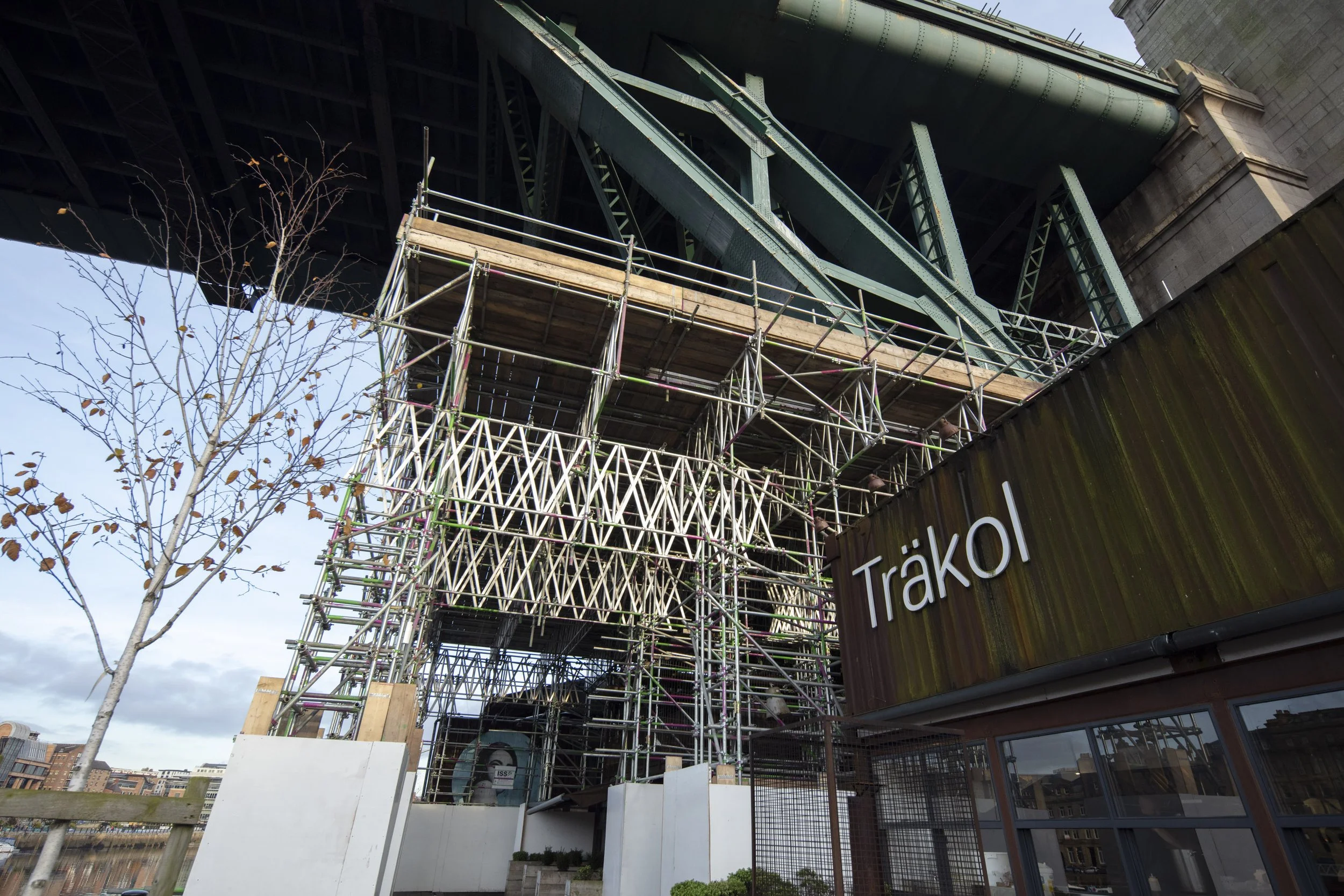
Restoring
An Icon
A major restoration programme to the Grade II* listed Tyne Bridge that will see it shine proudly in the North East skyline once again. Find out more about the structural work taking place that will preserve this much-loved landmark for future generations.
Frequently Asked Questions (FAQs)
The Tyne Bridge is used by up to 70,000 vehicles per day and capacity has been greatly reduced as we carry out the major restoration works. Check out the FAQs to find out more.
-
The Tyne Bridge is not only a defining symbol of the North East, it is also a major gateway to the city and plays a key role on the strategic highways network. This refurbishment programme is vitally needed to restore the much loved bridge to its former glory and preserve it for future generations. The works will also protect the structural integrity of the bridge and ensure it is safe for use in the future.
-
Restoration works to the Tyne Bridge got underway in September 2023 using councils’ funding, after the kittiwakes had departed for the breeding season. This first phase of the £32m programme involves erecting scaffolding below the bridge deck around the Gateshead tower, which is having minimal impact on the travelling public.
Work on the main bridge deck commenced on 2 April 2024.
-
The costs of fully refurbishing a structure of this scale and importance is way outside the scope of normal council budgets and relies on government funding. Minor maintenance has been carried out every year, but there isn’t enough money in council budgets to carry out significant works which cost in the region of £32 million.
As the last restoration of the bridge was in 2001, and the paint system is designed to last 18-20 years, the work is overdue and urgently required. Newcastle City Council applied to the Department for Transport’s Major Road Network fund in 2019, and has campaigned hard since then to secure the funding.
This funding bid was approved in June 2022, with NCC given programme entry approval, subject to the Final Business Case being completed, which was submitted in July 2023. The Final Business Case was approved in February 2024, and the main works are scheduled to commence from April 2024.scription
-
This is a hugely challenging and complex project which will take around four years to complete, due to the sheer size of the bridge, its age and Grade II* listed status, protecting the kittiwake colony from disturbance and the massive scope of work required which isn’t just the sizeable task of painting it but a full restoration programme to see the bridge returned to its former glory. As well as managing disruption to traffic on a major gateway to and from the city.
Detailed inspection work which took place in 2022, has revealed more deterioration than originally anticipated with corrosion of the steel work caused by peeling paintwork, damaged deck joints, leaking drains and damage to the road surface and pavements on the Grade II* listed structure, which has also added to the length of the programme.
To deliver the repairs and strengthening safely, the scaffold will be installed over approximately 20 phases to maintain the integrity of the structure’s load capacity, while keeping the road and footpaths open to traffic and pedestrians throughout the project. These loading constraints result in the programme to complete the restoration being across four years.
-
Lane closures are required to allow safe access to the bridge for the contractors carrying out the works and to protect the public. This will see the Tyne Bridge reduced to one lane in each direction. One footway will be available at all times.
-
No, the works will be carried out in phases over the four years with sections of the bridge scaffolded for access to allow the painting works to be carried out safely. The scaffolding will be removed as each phase is completed.
-
The current programme of works will see lane restrictions in place for a minimum of two years, with further temporary lane closures and overnight closures scheduled for the remaining two years of restoration works, reducing the impact on the city region’s network and local economy.
-
With the Tyne Bridge being home to over 1,200 pairs of kittiwakes, the furthest inland breeding colony of kittiwakes in the world, all aspects of the refurbishment programme have been developed in consultation with wildlife groups to minimise disruption to this protected species.
With the kittiwakes having departed last September, the first phase of work involved erecting scaffolding around the Gateshead tower. The scaffolding allows the steelwork adjacent to the Gateshead tower and above ‘By the River Brew’ to be fully sheeted to protect the environment during the works.
Dubbed kittiwake hotels, nesting ledges have been built onto scaffold towers which the kittiwakes can use when they return for the breeding season in 2024. This would provide compensation for any nesting sites inaccessible during the refurbishment works.
-
This dedicated project website is regularly updated, and you can join our mailing list to receive regular e-newsletters. An Information Hub is open on the Newcastle quayside for drop ins if you would like to speak to the team face-to-face.
-
The Tyne Bridge plays an important part in the Great North Run, with over 60,000 people running over this iconic structure. This bridge will still play a key role in the run as there will be minimal impact on runners at this key sporting event. The works will be carefully phased around this annual event to ensure there is enough capacity on the carriageway to accommodate the runners.
-
Visit the Get in Touch page to submit an enquiry. A dedicated Stakeholder Liaison Officer will liaise with local businesses and residents surrounding the Tyne Bridge.
-
While the work is ongoing the following restrictions will apply - 18T weight, 4.5m height and 3.3m width.






